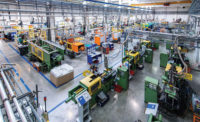The 2015 revision of ISO 9001 has debuted with mixed reviews from smaller registrars and suppliers. The question arises: is there going to be any measureable benefit from these changes other than increased income for the ISO bureaucracy? One of the early reasons for change was to align ISO standards with Annex SL. Not sure all the interested parties are excited with this reason.
This latest revision may even have a negative financial impact on smaller companies that hired consultants to help them become certified. These companies finally have well established systems that satisfy both their customers and outside auditors, why change just so ISO can align with Annex SL? Some are even concerned they will have to hire another consultant to assure passing the next audit, not necessarily a cost effective way to do business. Growing small companies are growing for reasons unrelated to the 2015 revisions that complicate requirements and records needed to pass an audit. The risk management 101 requirements added to this last revision should be market driven and not ISO requirements.
As a result of the push-back associated with these new requirements, there is at least one independent registrar that will continue to certify to ISO 9001:2008, will others follow? Seems too easy and simple. (Opportunity for some new registrars?)
To avoid these unnecessary changes some companies may consider switching to the new international quality norm, IQN900. This new standard was developed primarily to:
- Facilitate continued certification of legacy supplier quality systems with little or no change.
- Provide an international quality standard with minimum change to content, format and terminology over time.
And there are more advantages in switching to IQN900:
- Everything needed for a formal quality system in about half the words of ISO 9001.
- Improved wording for management responsibilities and review
- Uniformity in key areas for customer evaluations.
- User friendly, easy to understand.
- Requires little or no changes for existing systems.
- Requires little or no training.
- Requires no additional standards for definitions
- or explanations.
- “Self-certification” is formally defined and permitted.
- No redundant audits are required.
No redundant audits:
Redundant internal and external audits can have significant, negative ROI. And many companies benefit little from redundant internal audits telling them what they already know from weekly staff meetings and periodic management reviews. (The DOE has been actively trying to eliminate redundant audits for years to save taxpayer money.) Single certification audits are not only sufficient, but also fit the lean manufacturing concept of eliminating redundancies, saving the supplier (and ultimately the customer) both time and money. In any case, a certification audit is all that is needed or the name needs to be changed. (Audit cycles are traditionally three years with an initial, comprehensive “certification” audit followed by two annual “follow-up” audits of a smaller scope.)
In an effort to expand their supplier base and reduce costs, some customers are now requiring suppliers to have “compliant” and not “certified” quality systems. The IQN900 standard makes it easy for suppliers to document quality system compliance. IQN900 states that:
“Some suppliers may grow until they need a formal quality system not necessarily to improve their quality, but to support documented quality system compliance for new customers.”
Suppliers are now able to quote projects requiring compliance documentation by using the formal self-certification process included in IQN900. Suppliers and customers both will like the way key supplier information is organized and documented in the new, one page “SQSC,” especially small suppliers with specialized products or services for the petro-chem industries.
If your company has an established quality management system providing good results, why change? Do you expect:
- any improvement in quality metrics?
- any increase in sales and profits?
- any returns on your change investment?
There are many things to think about before embarking on a company-wide project to document changes and re-train personnel. Is it really worth all the headaches to align your quality system with Annex SL?
The new IQN900 international quality norm appears to be in the right place at the right time to save your company from the high costs of changes that you or your customer may not want or need.
You can now advocate for a lean approach to your quality management system by switching to IQN900. Or, if you are just starting on the road to a formal quality management system, IQN900 is definitely the standard for you.
To summarize your options:
- Do nothing. Let your certificate expire.
- Go through all the time, trouble and cost to re-certify to the 2015 revision.
- (Meet new consultants along the way?)
- Find a registrar to re-certify you to ISO 9001:2008.
- Switch to IQN900.
(Note: ISO is a registered trademark of the International Organization for Standardization)
Background:
More than 40 years of experience and expertise in quality, engineering and technical writing went into the development of the IQN900TM international quality norm. Specific insights for international supply chains have been included. Going forward, this is the ideal international quality norm/standard compatible with all types of commerce and supply chains. For more information, email [email protected]. IQN900 is available at www.iqn900.com.






